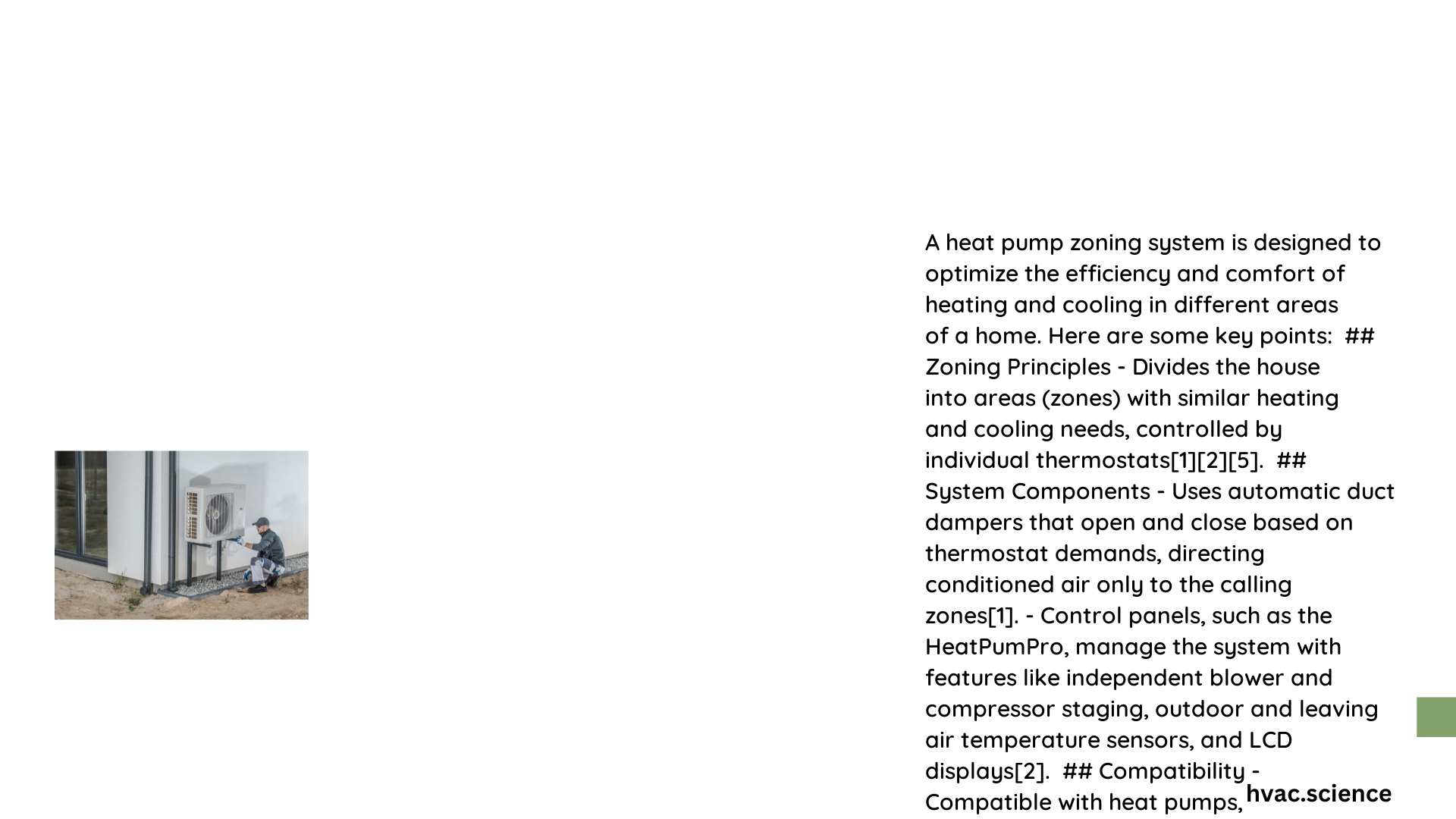A heat pump zoning system is an advanced climate control solution that allows homeowners to create customized temperature zones within their living spaces. By utilizing intelligent dampers, multiple thermostats, and sophisticated control panels, this innovative technology enables precise temperature management, reduces energy consumption, and enhances overall home comfort by targeting heating and cooling to specific areas independently.
What is a Heat Pump Zoning System?
A heat pump zoning system is a sophisticated climate control method that divides a home into multiple independent temperature zones. Unlike traditional HVAC systems that treat the entire house as a single unit, zoning systems use motorized dampers and individual thermostats to provide personalized temperature control.
Key Components of a Heat Pump Zoning System
| Component | Function | Typical Specifications |
|---|---|---|
| Zone Panel | Central control unit | Controls up to 6-12 zones |
| Thermostats | Temperature monitoring | Internet-connected options available |
| Motor-Driven Dampers | Airflow regulation | Up to 3 dampers per zone |
| Transformers | Power supply | 24 VAC Class 2 transformer |
How Does a Heat Pump Zoning System Work?

The system operates through a sophisticated network of components:
- Zone Detection
- Individual thermostats measure temperature in each zone
-
Sensors collect data on room-specific conditions
-
Airflow Management
- Motor-driven dampers open and close to direct conditioned air
-
Precise control prevents overcooling or overheating
-
Intelligent Routing
- Zone panel coordinates damper movements
- Ensures efficient energy distribution
What Are the Benefits of a Heat Pump Zoning System?
Energy Efficiency Advantages
- Potential energy savings of 20-40%
- Reduced unnecessary heating and cooling
- Lower utility bills
- Minimized system wear and tear
Comfort Optimization
- Individual room temperature control
- Eliminates hot and cold spots
- Personalized climate settings
- Reduced family temperature disputes
What Factors Influence Installation Costs?
Cost Breakdown
- Equipment Costs: $2,000 – $5,000
- Labor Expenses: $1,000 – $3,000
- Ductwork Modifications: Variable
Installation Considerations
- Home square footage
- Number of desired zones
- Existing HVAC infrastructure
- System complexity
What Challenges Might Homeowners Face?
Potential Limitations
- Higher upfront investment
- Complex installation process
- Requires professional expertise
- Compatibility with existing systems
Recommended Selection Criteria
Ideal Candidates
- Multi-story homes
- Homes with varying sun exposure
- Families with diverse temperature preferences
- Energy-conscious homeowners
Professional Installation Tips
- Consult certified HVAC professionals
- Conduct thorough home assessment
- Evaluate existing ductwork
- Choose compatible equipment
- Consider long-term energy savings
Maintenance Requirements
- Annual professional inspection
- Regular filter replacement
- Damper mechanism lubrication
- Software/firmware updates
Future Technology Trends
- Smart home integration
- AI-powered zone management
- Enhanced energy monitoring
- Predictive maintenance capabilities
Conclusion
A heat pump zoning system represents a sophisticated approach to home climate control, offering unprecedented comfort, efficiency, and personalization. By understanding its components, benefits, and considerations, homeowners can make informed decisions about implementing this advanced technology.
